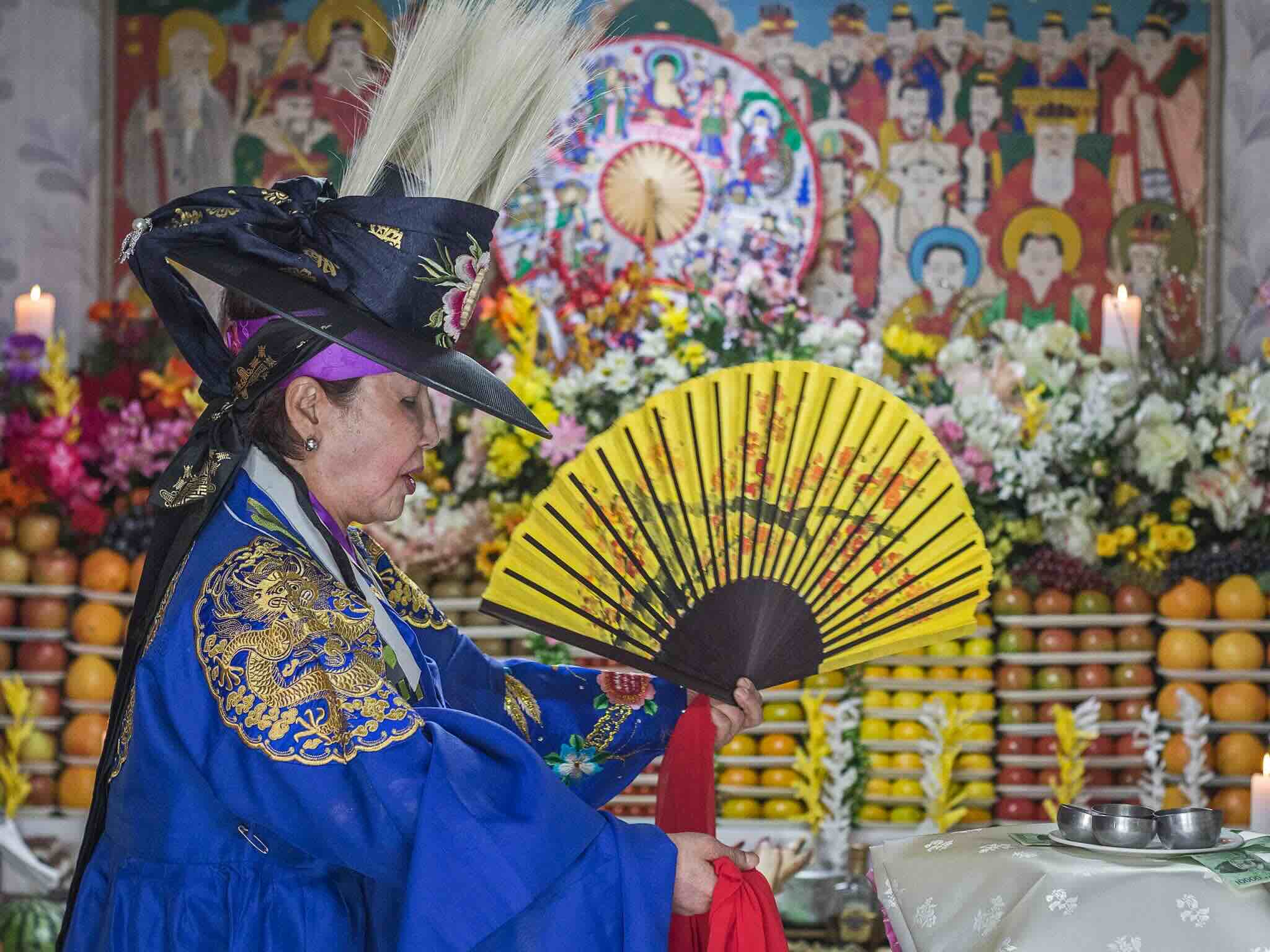
Korean shamanism is a rich tapestry of ancient beliefs and rituals that have shaped the cultural landscape of Korea for centuries. But what exactly is it? Korean shamanism is a traditional religion that involves the worship of gods, spirits, and ancestors through rituals conducted by shamans, known as mudang. These shamans act as intermediaries between the human world and the spiritual realm, performing ceremonies to heal, protect, and bring good fortune. Despite the rise of other religions, Korean shamanism remains deeply ingrained in Korean society, influencing everything from festivals to daily life. Ready to dive into 29 intriguing facts about this fascinating tradition? Let's get started!
What is Korean Shamanism?
Korean shamanism, known as Muism or Sinism, is an ancient spiritual practice deeply rooted in Korean culture. It involves rituals, ceremonies, and a belief in spirits and gods that influence the natural world and human affairs.
- Muism is one of the oldest religions in Korea, dating back thousands of years.
- Shamans, called Mudang for women and Baksu for men, act as intermediaries between humans and spirits.
- Gut is a traditional shamanistic ritual performed to communicate with spirits, seek blessings, or ward off evil.
- Shamanic practices often include dancing, singing, and drumming to enter a trance state.
- Shamanism in Korea is closely tied to nature, with many rituals performed outdoors in sacred spaces.
The Role of Shamans
Shamans hold a significant place in Korean society, acting as healers, fortune-tellers, and spiritual guides. Their roles are diverse and essential for maintaining harmony between the physical and spiritual worlds.
- Mudang are predominantly women, reflecting the matriarchal aspects of Korean shamanism.
- Baksu are male shamans, though less common, they play crucial roles in certain rituals.
- Shamans undergo rigorous training and initiation rites to gain their spiritual powers.
- Shamanic rituals often involve offerings of food, money, and other items to appease spirits.
- Shamans are believed to possess the ability to heal physical and mental ailments through their spiritual practices.
Shamanistic Rituals and Ceremonies
Rituals and ceremonies are central to Korean shamanism, each serving a unique purpose and involving elaborate preparations and performances.
- Gut ceremonies can last several hours to several days, depending on their purpose.
- Naerim-gut is a ritual for initiating new shamans, involving intense spiritual experiences.
- Dodang-gut is performed to protect villages and ensure prosperity.
- Ssitgim-gut is a purification ritual for the deceased, helping their spirits move on peacefully.
- Jeseok-gut is conducted to pray for good harvests and agricultural success.
Beliefs and Deities
Korean shamanism encompasses a rich pantheon of gods, spirits, and ancestral beings, each with distinct roles and attributes.
- Hwangcheon is the supreme deity in Korean shamanism, overseeing all other gods and spirits.
- Sanshin is the mountain god, revered for protection and blessings.
- Jowangsin is the kitchen god, believed to watch over the household and its well-being.
- Chilseong represents the seven stars of the Big Dipper, associated with fate and destiny.
- Samshin is the goddess of childbirth and motherhood, invoked for fertility and healthy births.
Modern Influence and Adaptation
Despite modernization, Korean shamanism continues to thrive, adapting to contemporary society while preserving its core traditions.
- Shamanistic practices have influenced Korean popular culture, including music, dance, and theater.
- Modern shamans often use social media to reach a broader audience and offer their services.
- Shamanic elements are present in Korean festivals and cultural events, showcasing their enduring significance.
- Academic interest in Korean shamanism has grown, with scholars studying its historical and cultural impact.
- Shamanic tourism attracts visitors interested in experiencing traditional rituals and ceremonies firsthand.
Challenges and Preservation
Korean shamanism faces challenges in the modern era, but efforts are being made to preserve and promote this ancient tradition.
- Urbanization and modernization have led to a decline in traditional shamanic practices in some areas.
- Cultural preservation initiatives aim to document and safeguard shamanic rituals and knowledge.
- Government recognition of shamanism as an important cultural heritage has helped protect its practices.
- Young generations are showing renewed interest in shamanism, ensuring its continuity for the future.
The Magic of Korean Shamanism
Korean shamanism, with its rich history and vibrant rituals, offers a fascinating glimpse into a world where the spiritual and physical realms intertwine. From the Mudang who serve as intermediaries between humans and spirits to the colorful gut ceremonies that seek to bring harmony and healing, this ancient practice remains deeply rooted in Korean culture. Despite modern influences, shamanism continues to thrive, adapting while preserving its core traditions.
Understanding these practices not only enriches our knowledge of Korea's cultural heritage but also highlights the universal human quest for meaning and connection. Whether you're drawn to the mystical aspects or the cultural significance, Korean shamanism provides a unique lens through which to view the world. So next time you hear the rhythmic beat of a janggu drum or see the fluttering of hanbok during a ritual, you'll know there's a deeper story being told.
Was this page helpful?
Our commitment to delivering trustworthy and engaging content is at the heart of what we do. Each fact on our site is contributed by real users like you, bringing a wealth of diverse insights and information. To ensure the highest standards of accuracy and reliability, our dedicated editors meticulously review each submission. This process guarantees that the facts we share are not only fascinating but also credible. Trust in our commitment to quality and authenticity as you explore and learn with us.
